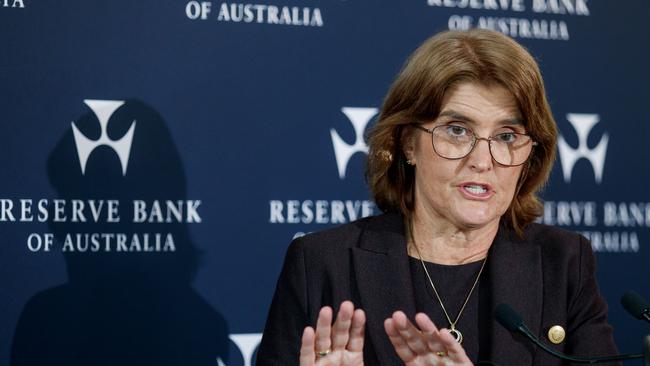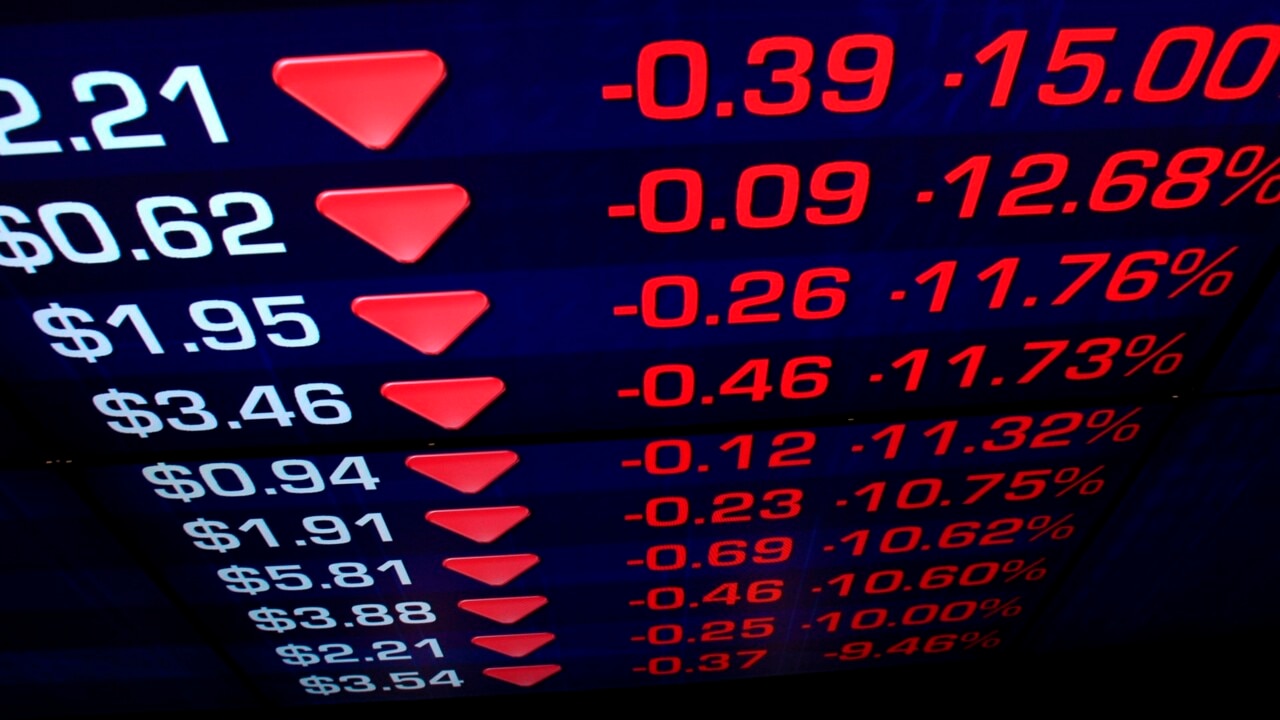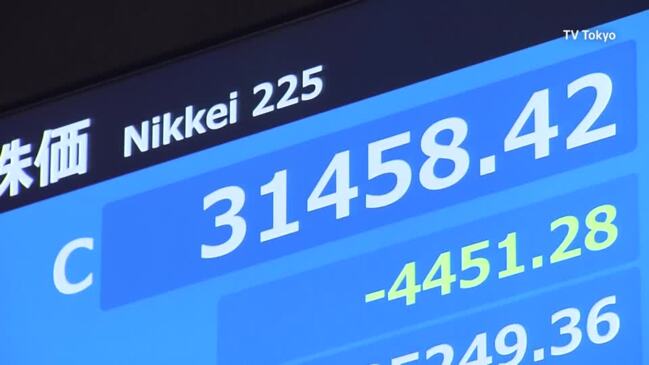$100bn market rout cuts across RBA tactics
Carnage on Asian stock markets and a global sell-off fuelled by fears of US recession have driven speculation the RBA could shift from controlling inflation to stimulating growth by early 2025.

A share rout that wiped more than $100bn from the ASX/200 on Monday, amid carnage on Asian markets and a global sell-off fuelled by fears of a US recession, has driven expectations that the Reserve Bank could shift from controlling inflation to cutting rates by early 2025.
While the Australian market fell 3.7 per cent in its worst day since May 2020, Japan’s benchmark Nikkei 225 index tumbled by 12.4 per cent in the biggest single-day rout since the October 1987 crash while Taiwan stocks ended down a record 8.4 per cent.
The local market’s fall of 5.8 per cent in the past two trading sessions was the biggest since the early stages of the pandemic in March 2020.
Weaker than expected US economic data indicated the world’s biggest economy could sink into recession, while Japan’s sell-off was compounded by a resurgent yen after the Bank of Japan lifted rates for only the second time in 17 years last week.
The market turbulence has locked in expectations that Australia’s central bank has no choice but to keep rates on hold, with economists expecting the RBA to lower its December headline inflation forecast on the back of Labor’s energy bill relief and rent assistance measures.
Judo Bank chief economic adviser Warren Hogan said the RBA board and governor Michele Bullock likely finalised their forecasts for the August Statement on Monetary Policy last Friday “when it looked like what we were seeing in global share markets was a de-risking or a bit of garden variety volatility”.
“But what happened (on Monday) in Japan – there are hints of a financial crisis there. Does that affect their forecasts?” Mr Hogan said.

“What is happening in the US is a cyclical issue. What’s happening in Japan is potentially 30 years in the making and if that financial system implodes it could have ramifications for the whole world. In moments of great uncertainty central bankers tend to be very cautious.”
Deloitte Access Economics partner Stephen Smith said the economy was in a relatively weak spot but there was “potential for a recovery in the second half of the year, and a rate rise would really undermine that recovery”.
“We expect a rate cut, if not in November, then sort of very early 2025,” he said. “The key for us now is the labour market. Inflation is less of a worry and so it’s really how quickly the labour market deteriorates from here.”
While the RBA was expecting unemployment to be 4.2 per cent by the end of the year, Mr Smith said this was optimistic and he was expecting close to 4.5 per cent.
The soft landing Ms Bullock was pursuing was still achievable, he said, but there was a chance for miscalculation.
“There’s always a risk of recession in a situation like this,” Mr Smith said.
“It’s not unusual for any central bank to slightly mistime the beginning of rate cuts – it’s a very tricky thing to get right and that’s certainly a possibility this time around as well.”
While some economists said there could be a rate cut this year, former RBA board member Warwick McKibbin said relief for mortgage holders could be delayed until 2026 unless there was “some major global shock”.
“My guess is they won’t be cutting this year for sure and probably not next year,” Professor McKibbin said.

“We were behind the curve. (Interest rates) should have been closer to 5 per cent ... I just don’t see why you would be cutting under the circumstances when inflation is well above the (target) band (of 2 to 3 per cent).”
Professor McKibbin said the cash rate of 4.35 per cent was “nothing near” what was required to “get inflation in the band” but he did not think the central bank would raise rates.
IFM Investors chief economist Alex Joiner said it was “almost premature to be talking about cuts this year”. He argued that if the Reserve Bank cut interest rates late this year or in February, “that’s probably bad news because it probably means that the unemployment rate has shot up a bit more than they expected”.
He also suspected the RBA could revise up its December unemployment forecast in the August statement.
EY chief economist Cherelle Murphy said she did not believe there would be any rate cut this year. “The was some concern that the inflation numbers would come in strongly from the June quarter last week, but essentially that didn’t occur ... Inflation is tracking largely in line with the RBA expectations,” she said.
“You might see some variation in the unemployment forecast for the end of the year. But that in itself does not necessarily mean the RBA will be in a hurry to cut rates.”
With the Bank of England cutting rates last week and expectations that the US Federal Reserve will lower rates in September, Peter Dutton said Australians still faced tough times ahead. “There’s not talk, unfortunately, of interest rates coming down in the economy here,” the Opposition Leader said.
“The government has had three budgets ... The decisions that they’ve made haven’t set us up to deal with the reality of a recession, whether it’s in the United Kingdom, or downturn in the Chinese economy – obviously our biggest trading partner. So we’ve got to prepare for bad times.”
HSBC chief economist Paul Bloxham said the RBA would hold rates and a cut was unlikely to come until the second quarter of next year. But he said the bank would likely increase its December unemployment forecast of 4.2 per cent.
Steven Hamilton, an assistant professor of economics at George Washington University and visiting fellow at the ANU, was the only economist who told The Australian the RBA should hike.
While he said it was nearly certain the bank would hold, Mr Hamilton argued that the June quarter inflation figures were not a case of “mission accomplished”. “The monthly inflation figures have hovered between 3.8 and 4.3 per cent since Christmas – since just after the RBA last raised rates,” he said.
“I think the stickiness of inflation has shown no signs of easing – the monthly inflation rate hasn’t moved in seven months. If that’s no cause for further action then I don’t know what is.”





To join the conversation, please log in. Don't have an account? Register
Join the conversation, you are commenting as Logout